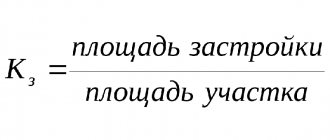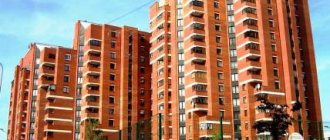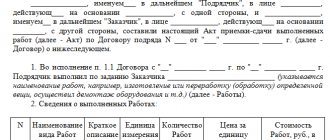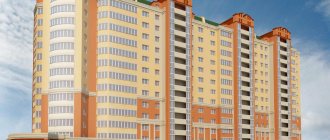What is a blocked house and its examples
A residential building of a blocked development is a collection of low-rise residential buildings built in one complex.
The essence of the concept of a house with blocked development is prescribed in Part 2, Clause 2 of Art. 49 of the Town Planning Code . It clearly states that a house in a blocked building is several residential buildings with 1-3 floors, consisting of several blocks. Each block is intended for one family. The blocks have common walls with each other. As a rule, a block complex is located on one plot of land and has access to a public area.
Let us give examples of houses of blocked construction.
These may be:
- Townhouse. These buildings are located outside the city. They have a small area, may have several floors, and a vertical layout. There is a separate entrance for each owner and personal territory.
- Violet. This is also a townhouse, but of an elite type. Such houses have a private terrace, a garage, a veranda, and a large local area that can accommodate an outdoor swimming pool.
- Duplex. Usually these are two block houses connected to each other by one wall and roof. They can be two-story - for two owners. Each floor is a separate section.
- Lanehouse. Small residential buildings. A garage can be built in each block.
- Quad house. These are 4 separate blocks. They will be connected to each other, like previous buildings, by common walls and a roof. Each owner of the block will have his own entrance, garage, and personal plot.
It is worth distinguishing such buildings from multi-apartment low-rise buildings, described in detail by SNiP 2.08.01-89.
Theoretically, block buildings are considered multi-apartment buildings, but they cannot be fully considered as such. The fact is that it is impossible to allocate a share in the common property of the house, which does not exist. Only the walls connecting the residential blocks will be considered common here.
Reconstruction of a blocked house
When it is necessary to delimit a building and create separate sections for families to live, but the characteristics do not allow this, reconstruction must be carried out. To achieve this, a major overhaul is carried out, communications for the sections are completely carried out, separation is carried out by blocks or partitions, and a separate entrance is equipped.
See also: Reconstruction of a brick house
The main difficulty is not related to carrying out the work, but to completing the documentation and obtaining permission.
Let us highlight the main points that do not allow the house to be considered blocked.
- It is not possible to divide plots into sections within a building.
- In the case of dividing the building into blocks, even the minimum area does not work out.
- The competent authorities do not give permission to carry out the work.
- The court rejected the application.
In this case, reconstruction work is prohibited.
Features of houses of blocked construction
Block-built houses may have special features:
- Individual blocks can be from 2 to 10.
- Each residential block is intended for one owner.
- Each block has its own separate entrance.
- Each block has its own communications.
- There may be a local area - both joint and separate.
- There is no common property. There are no shared spaces, for example, staircases, attics, basements, outbuildings, entrances, etc.
A blocked building is an integral structure, although it has isolated entrances to each of the blocks.
Registration of permission to build a house in a blocked building
In order to legalize the construction of such a house, it is necessary to obtain a building permit.
To do this you need:
- Prepare documents for the land plot where the residential blocks-sections will be located. Get a technical plan, this is especially important if a house of this type will be located on several plots of land. Before construction you will have to combine them into one. Without a technical plan, putting the house into operation will be impossible.
- Draw up a boundary plan for the original site.
- Obtain permission to build a residential building, structurally consisting of separate blocks, from the BTI.
Then you can form each block as a separate, blocked real estate object, build it - and put it on the cadastral register with the land plot.
Recognition of ownership rights to a house in a blocked building
To recognize a residential building as a blocked building, it is necessary to prepare documentation and submit a corresponding request to the following authorities:
- BTI or cadastre service.
- Local administration.
- Judicial authorities.
As a rule, a citizen, first of all, should contact technical specialists so that they can help draw up the necessary papers. If everything is in order, you will have to come to the administration in person. There the house must be assigned a number and a street name.
If there are problems with the documents, then the dispute will have to be resolved in court, involving the specified authorities. In addition, the court will look at how the issue was resolved pre-trial.
Liquidation of an educational organization
Calculation of obligations
. The NPO pays off debts first from cash, then from proceeds from the sale of property. If obligations remain, bankruptcy proceedings are initiated. There is a nuance here: for an institution, the sale of property and bankruptcy are not provided for, since it owns property assets with the right of operational management - there is simply nothing to sell.
Therefore, if there is a lack of money, creditors have the right to file lawsuits to bring the founder himself to subsidiary liability. The order of repayment of obligations is standard - personnel, budget, counterparties (for details, see Article 64 of the Civil Code of the Russian Federation). After completing the payments, you need to close your bank account.
Closure decision
. The sole founder makes the appropriate decision. At the same time, a liquidator (commission) is appointed who will deal with the process. Within 3 days, the liquidator submits a notice of closure to the Ministry of Justice (form P15001). Based on this document, an entry is made in the state registration register indicating that the legal entity has entered the stage of liquidation.
Liquidation of an educational organization involves complete closure without transfer of rights and obligations. From the moment the corresponding entry is made in the Unified State Register of Legal Entities, the legal entity officially ceases to exist. The compulsory process takes place in court and begins on the initiative of government agencies, usually due to the lack of a license.
The initiators of voluntary liquidation are the Government of the Russian Federation and the municipality for a federal and municipal budgetary organization, respectively, the owner for a private institution. Closing
. Having paid off with creditors, you can begin to create the final liquidation balance sheet - it confirms that all obligations have been fulfilled. Together with the LB, you must submit to the Ministry of Justice an application for state registration in connection with the liquidation (on form P16001), certificates from extra-budgetary funds, and a receipt for payment of the state duty (800 rubles).
The Ministry of Justice reviews documents within 14 working days. If everything is in order, the legal entity is officially closed - removed from tax registration, excluded from the register, and released from all rights and obligations.
Management and right to dispose of houses of blocked development
There is no regulatory framework regulating the management of houses of this category. Blocked houses do not fall under the multi-apartment type , but they are similar to private households. Therefore, the owner will manage the residential block, as well as bear full responsibility for the condition of the housing.
For example, the owners will carry out repairs and maintain repairs of a blocked residential building. If we were talking about an apartment building, then funds would be allocated for major repairs from the general budget, or the regional budget (in case of an emergency combined building).
Please note that houses of combined development are a house for several owners, where each owner has rights to a separate block and a separate plot with an individual exit to it from the part of the house and an individual exit from the plot to the general area.
You can invite your neighbors to elect a person on the street or a manager who will resolve common issues.
Determination of the Investigative Committee in civil cases of the Supreme Court of the Russian Federation dated April 26, 2021
Resolving the dispute and satisfying the claim of Shmakov N.I. on bringing the renovated residential premises to their previous condition, the court proceeded from the fact that at the time of the start of construction work the defendant did not have the necessary permission and consent of the second owner of the house N.I. Shmakov. to carry out house reconstruction. In addition, the court, citing Part 2 of Article 61 of the Civil Procedure Code of the Russian Federation, pointed out that the decision of the Mikhailovsky District Court of Primorsky Krai dated July 17, 2014, which rejected the claim of V.A. Sych, was prejudicial for this case. to the administration of the Mikhailovsky municipal district of Primorsky Krai on recognition of ownership of the reconstructed part of the house and preservation of part of the house in the reconstructed condition.
Advantages and disadvantages of houses of blocked development
Blocked residential buildings have the following advantages:
- They are economical. The blocks usually have a small area, which is beneficial to the owners. Moreover, there will be savings for the developer - on construction due to common walls, roof and communications.
- Safe. There may always be someone in the complex. Neighbors will be able to look after someone else's property or house when the owners are away.
- A small recreation area in a suburban area.
- The opportunity to solve problems together with other homeowners.
- Operating costs are reduced, since there is no need to spend money on security, waste removal and area cleaning. The entire amount will be distributed among residents.
- Unique style and design of premises. Typically, such houses have a special layout and design that is developed by specialists.
In addition to the advantages, houses in this category also have disadvantages:
- Limited space. The living area, parking lot, and the surrounding area are usually modest.
- Impossibility of façade changes to the block. The style is the same for all sections.
- Windows overlooking the neighbor's territory. This happens especially often among owners of apartments on the upper floors.
- Entrance to apartments on the upper floors is through individual staircases, which are often open. It's inconvenient, there is no porch.
- If there are no good relations with neighbors and there are disagreements, it will not be possible to make joint repairs.
From a legal point of view, blocked houses are not so bad.
But, still, before purchasing, contact our lawyers. They will check all the documentation, identify all the shortcomings and help you decide whether it is worth purchasing a unit in such a house.
Document overview
Rosreestr clarified that a block of a residential building with blocked development can be put on cadastral registration and (or) the rights to it can be registered as a building with the purpose of “residential” (for example, with the name “residential building of blocked development”, “block of residential building of blocked development"). Conditions - the type of permitted use of the land plot provides for the possibility of placing such a house on it; the house was not built as an apartment building, in which apartments are located and registered in the Unified State Register of Real Estate.
There will be a transfer of premises from non-residential to residential without disturbing the structures of the house.
1. Possession and use of property in shared ownership is carried out by agreement of all its participants, and if no agreement is reached, in the manner established by the court.
2. A participant in shared ownership has the right to be given for his possession and use a part of the common property commensurate with his share, and if this is not possible, he has the right to demand appropriate compensation from other participants who own and use the property falling on his share.
You need to obtain permission from your neighbors and also need to obtain permission from the administration for reconstruction. Have a nice pleasant evening.
As I understand from the question, you live in a block building and are the owner of one of the blocks. If I understand you correctly, then the law allows for the location of each of the blocks of a block-building house on a separate plot of land (Clause 2, Part 2, Article 49 of the Town Planning Code of the Russian Federation). In addition, if the block is located on a separate plot of land, it is recorded in the state real estate cadastre as a Building, not a Premises.
That is, in this case, you are the owner of the Building located on the land plot formed for its operation.
And now the question for you is why you will ask for some kind of consent from persons not related to your property.
Advice from lawyers (updated 11/24/2020)
1) I have a block house, the land plot is demarcated under the house block. Made an extension to the block! How to legitimize reconstruction? The architecture refuses to give permission for my block and they ask me to order a project for all the blocks. Is this legal?
2) A house in shared ownership of 1/2. They filed a lawsuit to change the status of the house from an apartment building to a house in a blocked development. The court refused this, because common roof? How to properly reconstruct the roof and file a claim again in court? The second shareholders are against everything and do not agree to anything.
3) House of 1/2 share, total. area 100.5 sq.m. pl. building area 132 sq.m. after reconstruction by one of the co-owners. Earth plot 478 sq.m. According to simplified rules, it is registered as a residential building of a blocked building. Co-owner. The person who carried out the reconstruction asks to divide the house into blocks. But at the same time he refuses to simultaneously divide the land plot and outbuildings. Is a positive decision possible in court?
4) There is a blockaded house - a common small section of the wall adjoins a neighbor or relative. Our house is in a dilapidated state, we want to demolish it and build a house in the same place but of different sizes and shapes, using the old foundation, is it really possible to formalize this as a reconstruction?
5) They filed a claim against the distribution of shares in kind, the expert concluded on all points of the examination that the house could not be an apartment building or a block of flats at this stage; the house needed to be reconstructed. Based on such findings, can the judge still make a decision on whether to be singled out?
Content
“Blocked residential development” means the type of permitted use of land plots and a property with the status of a residential building.
Blocked residential building - VRI ZU
In the master plans of settlements and land development zones, the residential development zone is divided into territories. For the residential development zone, the dominant types of land use are determined:
- individual housing construction (IHC)
- low-rise buildings
- personal plots of personal subsidiary plots (LPH)
- blocked residential development
- mobile housing
- mid-rise residential development
- multi-storey residential development (high-rise development)
- residential development maintenance
Blocked residential development is one of the typical types of land use in populated areas. More precisely, this is a VRI ZU in part of the territorial zone of residential development.
Blocked residential development – real estate object
The current VRI Classifier 2021 is the main guideline when analyzing the possibility of developing land plots within a populated area.
The type of use of the plots “blocked residential development” was assigned code 2.3. Its description indicates that plots with such VRI can be used:
- for the construction of a residential building suitable for permanent residence: house:
- not divided into apartments
- no higher than 3 above-ground floors
- the floors have a common wall without openings with the neighboring house
- the number of combined houses in this “common house” is no more than 10
- ornamental and fruit trees
- garages
- sports and children's playgrounds
On a site with VRI “blocked residential development” it is allowed to build:
- residential building consisting of a maximum of 10 combined blocks
- garages
- auxiliary structures
What are semi-detached houses?
Combined houses are a hybrid type of low-rise residential buildings. These are residential buildings of the same type located in a row, blocked with each other by side walls.
Each of the autonomous blocks has:
- separate entrance
- small plot (front garden)
- garage (often)
Blocked buildings do not belong to the class of apartment buildings in which:
- the exit from your own apartment leads to the front door (a public place)
- exit from the front door - into the territory (ZU)
- the plot is owned by all residents of the house
In combined houses, each block has its own access to a private plot, which can have its own garage.
Common types of residential blocked development:
- duplexes
- townhouses
- lanehouses
- quad houses
- british houses
They differ in architectural solutions and internal layouts.
Land plots adjacent to the blocks
Developers of a blocked house have questions about the original memory:
- How is it distributed between shared houses?
- what should its area be?








